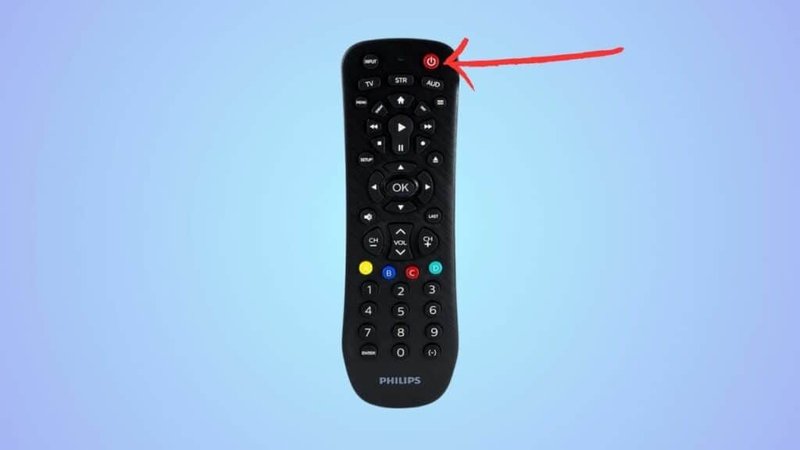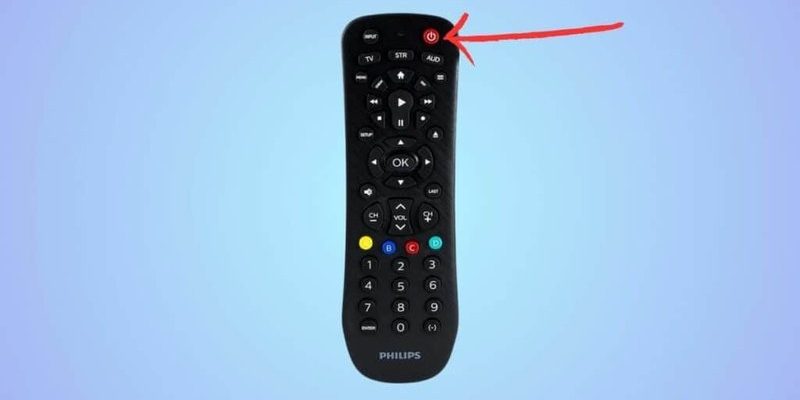
Here’s the thing: Philips Universal Remotes have become super popular because they promise to control almost anything with an IR sensor, old or new. But smart TVs? Those are a different beast. They’re not just “on or off” boxes anymore; they’re basically giant computers that happen to show your favorite rom-coms. So, does a Philips Universal Remote really pull off the magic trick with a smart TV—or are there catches you should know about? Grab a snack, and let’s get into it.
What Is a Philips Universal Remote, Anyway?
Let me explain. If you haven’t seen one before, a Philips Universal Remote looks a lot like a regular TV remote—just a bit more button-happy. The idea is simple: instead of juggling separate remotes for your TV, soundbar, Blu-ray, and those other mystery gadgets, you use one remote to rule them all. No more hunting under couch cushions for the “right” clicker.
Philips makes a bunch of these remotes, from basic “three-device” models to fancier versions that control up to eight things at once. They come with a code list (a mini phonebook for brands and devices) so you can teach the remote which gadgets you own. There’s something incredibly satisfying about clicking a few buttons, punching in a code, and suddenly your TV obeys this new commander-in-chief.
Now, this “universal” part sounds like magic, but it mostly works using infrared (IR) signals—the little invisible beams that send instructions from your remote to your electronics. Most classic TVs and older devices live and breathe by IR. So, if your smart TV still has an IR sensor (spoiler: most do!), there’s a pretty good chance your Philips Universal Remote can communicate with it.
How Compatible Are Philips Remotes With Smart TVs?
You might be wondering, “Are all smart TVs created equal in the eyes of a universal remote?” Here’s where things get a little technical, but stick with me—it’s not rocket science.
Most smart TVs from major brands (think Samsung, LG, Sony, TCL, Hisense—you get the idea) still support IR commands, even if they come with a fancy Bluetooth or WiFi remote. The Philips Universal Remote has codes for hundreds of brands and models, including nearly every major smart TV released over the last decade. All you have to do is find the right TV code in the included booklet (or look it up online), enter it, and cross your fingers.
But honestly, real-world compatibility isn’t always perfect. Sometimes, smart TVs use unique features (like voice controls or touchpads) that a universal remote just can’t mimic. In most cases, you’ll get basic control—power, volume, channel, input switching, and navigation. The fun stuff, like launching Netflix with a dedicated button or voice search, may be trickier, depending on your TV model and the age of your Philips remote.
Pro tip: If your smart TV came with a super-sleek remote that doesn’t seem to have a clear “front” or is obviously using Bluetooth (or even WiFi), double-check if there’s still an IR sensor somewhere on your TV. Otherwise, your Philips Universal Remote might not get through to it.
How Do You Sync a Philips Universal Remote With a Smart TV?
This step is where a lot of people hesitate—I get it, who wants to feel like they’re defusing a bomb just to watch Netflix? But syncing (or pairing) a Philips Universal Remote with a smart TV is usually just a few steps and a touch of patience.
- Install the batteries. Weak batteries = random weirdness. Just trust me on this one. Start fresh.
- Find your TV code. Philips includes a codebook or you can go to their website. This is where you’ll find the code for your specific TV brand and model.
- Enter “setup” mode. Usually, you hold down a setup button until a small LED light blinks.
- Punch in the code. Using the number pad, enter your TV’s code. That little LED should flash or stay solid to let you know it accepted the code.
- Test the buttons. Power, volume, input—do they work? If not, try the next code for your TV brand.
Here’s a real-life hint: Don’t freak out if you must try multiple codes. Sometimes, TV models within the same brand use different IR signals. It’s a bit like trying keys on a forgotten padlock—eventually, one fits.
And if something goes haywire or you lose your place, just reset the remote (there’s usually a tiny reset button or a combo of button presses in the Philips manual) and try again. Troubleshooting is just part of the adventure.
What Features Will (and Won’t) Work?
If you’re the kind of person who likes to know exactly what you’re signing up for, this section is for you. Here’s the straightforward truth on which smart TV features the Philips Universal Remote will handle—and which ones might leave you hanging.
- Power, volume, input, channels: These basics almost always work if you’ve got the right code.
- Menu navigation: Up, down, left, right, and “OK” usually function, so you can get around basic settings and apps.
- Smart app shortcuts: This is hit-or-miss. Most universal remotes don’t have a “Netflix” button or dedicated shortcuts for streaming platforms.
- Voice commands, Bluetooth features: Sorry, the Philips Universal Remote can’t do this. It works with IR, so anything requiring Bluetooth or WiFi (like voice search or pointer controls) won’t be compatible.
Here’s the quirky part: Sometimes, older universal remotes miss out on super-new smart TV features. If you own a cutting-edge 2023 OLED TV with its own futuristic remote, the Philips universal might only capture the basics. For most folks, though, that’s plenty—you can power on, adjust volume, switch HDMI ports, and scroll through the on-screen menu without digging through your remote collection.
What If My Smart TV Isn’t Responding?
Let’s be real: tech never works perfectly the first time. If you’ve paired up your Philips Universal Remote and your smart TV is giving you the silent treatment, don’t sweat it—there are some classic troubleshooting moves you can try.
- Double-check the code: Sometimes, entering the wrong digit can throw the whole thing off. Try another code from the list for your TV brand.
- Check your batteries: Weak or dead batteries are a super common culprit. Pop in some fresh ones.
- Reset your remote: There’s often a reset button or a method in the manual. This erases previous pairings and lets you start fresh.
- Line of sight: Make sure nothing is blocking the remote’s signal to your TV’s IR sensor. Even glass doors can sometimes mess with the signal.
And if all else fails? Sometimes, the remote just isn’t compatible with your exact TV model. Not every universal remote is truly… universal. But most smart TVs from the big brands still play nicely with Philips remotes, as long as you’re patient and don’t mind a little hands-on experimenting.
Philips Universal Remote vs. the Brand’s Original Remote
You might be thinking, “Should I just keep using my TV’s original remote?” That’s a totally fair question, especially if you’re attached to those built-in Netflix or Disney+ buttons. Let’s lay it out.
- Original remotes are designed to work with all the special features and quirks of your TV. App launching, voice commands, fancy settings—all included.
- Philips Universal Remotes are all about flexibility. They might not be able to do everything, but they can run the basics for your TV, soundbar, and maybe even your DVD player, all at once.
- Replacement cost is a thing. Brand-name remotes can be pricey to replace, and they don’t always show up at your local store. A Philips remote is usually cheaper and easy to find on short notice.
In my experience, if you’re someone who just wants to flip on the TV, turn up the volume, and occasionally change the input to your game console, the Philips Universal Remote does the job with no drama. If you’re a power user who loves every smart feature, you may want to keep the original handy, too.
When Should You Consider Alternatives?
Let’s say your Philips Universal Remote just isn’t cutting it, or maybe your smart TV is a little too new or fancy. What then? There are some alternatives you can try.
- Brand-specific universal remotes: Some TV makers offer their own “multi-device” remotes that support advanced features (like LG’s Magic Remote or Samsung’s universal models). They’re often pricier but unlock more smart TV functionality.
- Phone apps: Lots of smart TVs let you control them from a smartphone app. These often support nearly all features, including voice input and smart home integrations—if you’re comfortable with touchscreens.
- Third-party advanced universal remotes: Brands like Logitech (Harmony series) offer remotes that go way beyond IR—they support Bluetooth, WiFi, macros, and more… for a price.
If the Philips option isn’t hitting the mark and you’re missing out on key smart TV features, one of these routes might be your best bet.
Real-World Examples: Matching Your TV With the Right Philips Remote
Let’s put all this theory into practice. I’ve helped family and friends set up Philips Universal Remotes with all sorts of TVs—here’s how it played out.
- Sarah’s old Samsung TV (2015): The Philips remote worked like a charm! All the basics plus some menu navigation. No issues at all.
- Uncle Joe’s new LG OLED (2022): The remote handled power, volume, and input, but couldn’t launch the built-in streaming apps or use the pointer feature. Still better than juggling two remotes.
- My friend’s TCL Roku TV: This one was trickier. The Philips remote managed power and volume, but navigating Roku’s app launcher was a no-go. We ended up using both remotes together—one for basic TV stuff, the other for apps.
Honestly, most people just want “good enough.” If you can turn on the TV, adjust volume, and change channels or inputs, the Philips Universal Remote will fit the bill for tons of smart TVs, even newer ones. But if you want all the smart bells and whistles, you might need to mix and match your remotes—or look into a fancier universal option.
Final Thoughts: Are Philips Universal Remotes Worth It for Smart TVs?
If you’re drowning in remotes and just want a more streamlined life, Philips Universal Remotes make a lot of sense—especially if your smart TV isn’t brand-new or you just want basic controls. They’re affordable, easy to find, and (with a little patience) usually sync with most major smart TV brands. You’ll get power, volume, channel switching, and enough navigation to get around the basics, even on newer TVs.
But the honest truth? Smart TV features are growing faster than most universal remotes can keep up with. If you rely heavily on voice controls, smart apps, or advanced features, you might keep your TV’s original remote close by—or explore higher-end universal options with Bluetooth and WiFi support.
At the end of the day, it’s about what matters to you. If you’re after simplicity, Philips Universal Remotes deliver. If you crave every smart TV trick in the book, consider mixing and matching, or investing in something a little more high-tech. Either way, you’ve got options—and isn’t that the best kind of remote control?
